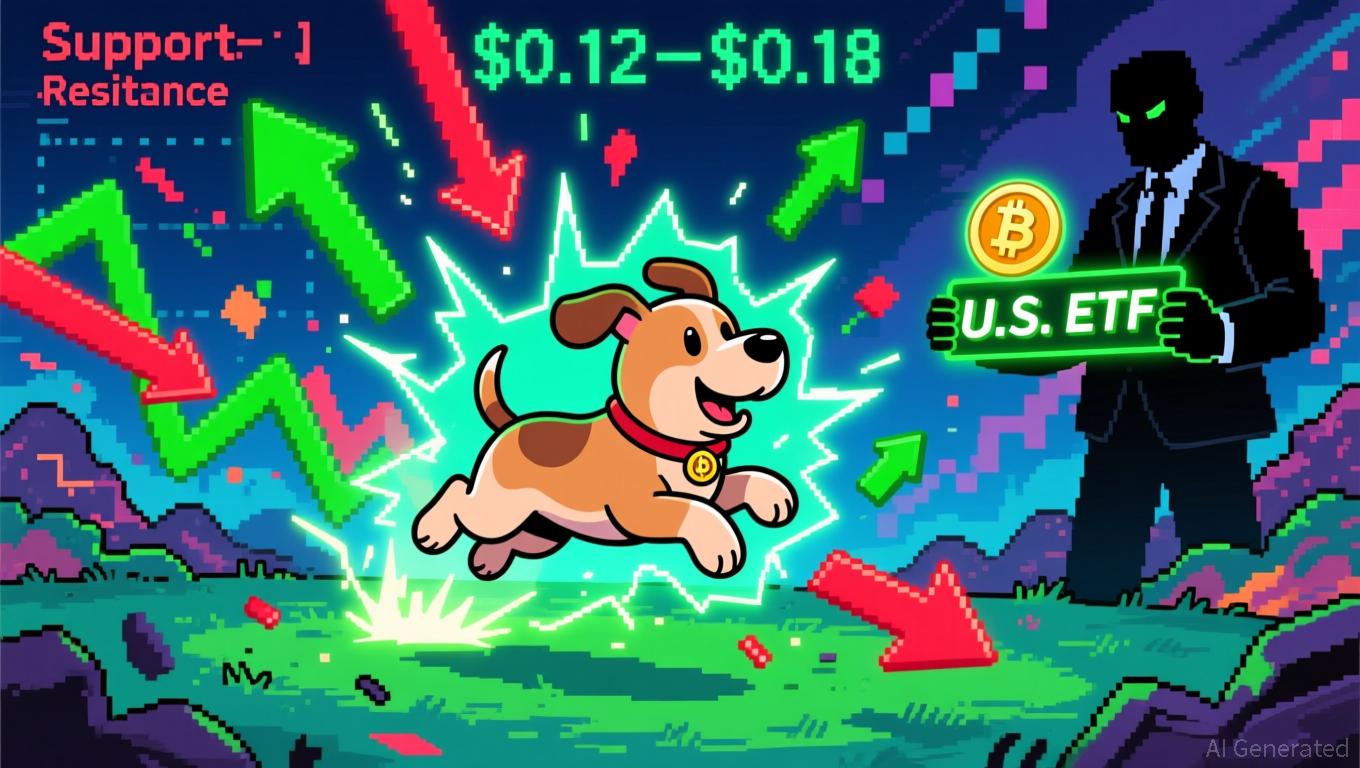The Bitcoin Collapse of November 2025: Causes Behind the Fall and Its Implications for Cryptocurrency Investors
- Bitcoin's November 2025 crash below $90,000 triggered $3.7B ETF outflows, exposing systemic risks in leveraged positions and regulatory gaps. - A "perfect storm" of October flash crashes, Fed policy ambiguity, and 3x leveraged ETFs amplified volatility, accelerating margin calls and sell-offs. - Regulators responded with mixed clarity: SEC approved unregistered utility tokens while ESRB urged 3-5x leverage caps to prevent cascading failures. - The crisis highlighted crypto's fragility as both a store of
The Triggers: A Confluence of Volatility
This crash was the result of multiple interconnected developments rather than a standalone incident. Initially,

Additionally, institutional investors played a complex role. While Bitcoin ETFs are a key avenue for institutional participation, the November withdrawals exposed their vulnerability to short-term market swings. Vincent Liu of Kronos Research commented, "ETF outflows are more about tactical adjustments than a fundamental change, but they highlight how fragile leveraged positions remain in a market still searching for its role as a store of value"
Regulatory Responses: Seeking Balance and Transparency
Regulatory bodies have responded with action.
At the same time, the European Systemic Risk Board (ESRB) issued alerts about the dangers posed by leveraged crypto instruments and stablecoins.
Systemic Risks: Fragile Foundations?
The events of November exposed how easily the crypto market can experience chain reactions of failure. The October flash crash showed that concentrated custodians and stablecoin risks can magnify losses, while November’s ETF outflows highlighted how quickly investor confidence can erode. As one analyst observed, "The market is still figuring out how to factor in macroeconomic trends, resulting in volatility unlike that of traditional assets"
The rise of leveraged ETFs has made the situation even more complex. These instruments, intended to boost returns, instead created a “leverage trap” where even minor price changes led to widespread liquidations. The ESRB’s push for leverage limits is a step in the right direction, but it also highlights a bigger problem: the absence of a coordinated international approach to managing cross-border crypto risks.
Implications for Investors
The November downturn is a stark warning for crypto investors: the sector’s potential for high gains is matched by the risk of severe losses. Retail participants should be especially cautious with leveraged products, while institutions need to focus on diversification and risk management. The ETF withdrawals also stress the need for careful liquidity planning;
Regulators, on the other hand, must strike a careful balance. While the SEC’s recent guidance on token sales is encouraging, the market as a whole needs stronger rules to address leverage, stablecoin vulnerabilities, and the risk of contagion across markets. The ESRB’s proposals are a good start, but international cooperation will be vital to prevent future turmoil.
Conclusion
The
Disclaimer: The content of this article solely reflects the author's opinion and does not represent the platform in any capacity. This article is not intended to serve as a reference for making investment decisions.
You may also like
Enlivex Integrates Biotechnology and Blockchain for a Treasury Transformation
- Enlivex Therapeutics raised $212 million to adopt RAIN tokens as its primary treasury asset, becoming the first U.S. public company to use blockchain-based prediction markets. - The investment includes USDT and USD, with RAIN's deflationary design aiming to stabilize value while enabling real-world event trading via AI oracles. - Enlivex's stock surged 85% post-announcement, aligning with growing institutional interest in prediction markets led by firms like Polymarket and Kalshi. - The move faces crypto

Bitcoin Updates: Metaplanet Utilizes Bitcoin-Backed Loan to Expand Portfolio Despite 20% Unrealized Loss
- Tokyo-listed Metaplanet secured a $130M Bitcoin-backed loan to expand BTC holdings despite a 20% unrealized loss on its 30,823 BTC reserves. - The firm maintains "sufficient collateral headroom" amid Bitcoin's $87,000 price, below its $108K average purchase cost, using floating-rate debt and equity financing. - Its hybrid funding model—$500M credit facility plus $5B capital injections—reflects broader industry reliance on crypto-collateralized borrowing amid tightening credit and falling stock prices. -

USDe's total value locked drops by 50% even as onchain activity remains strong, highlighting the vulnerability of DeFi yields
- Ethena's USDe stablecoin TVL fell 50% to $7.6B amid yield compression and unwinding leveraged carry trades, despite rising onchain transaction volume. - The synthetic stablecoin's 5.1% APY now lags Aave's 5.4% USDC borrowing rates, triggering outflows as leverage strategies become unprofitable. - Collapsing 10x leverage loops and maturing perpetual tokens accelerated TVL decline, exposing fragility of yield-bearing stablecoins in risk-off markets. - Chaos Labs recommends lowering Aave V3 stablecoin borro